Construction Management Software (CMS) is a suite of tools designed to streamline and enhance the various processes involved in construction projects. From the initial planning stages to project completion, CMS facilitates better collaboration, communication, and control, making it an essential resource for construction managers, contractors, architects, and engineers.
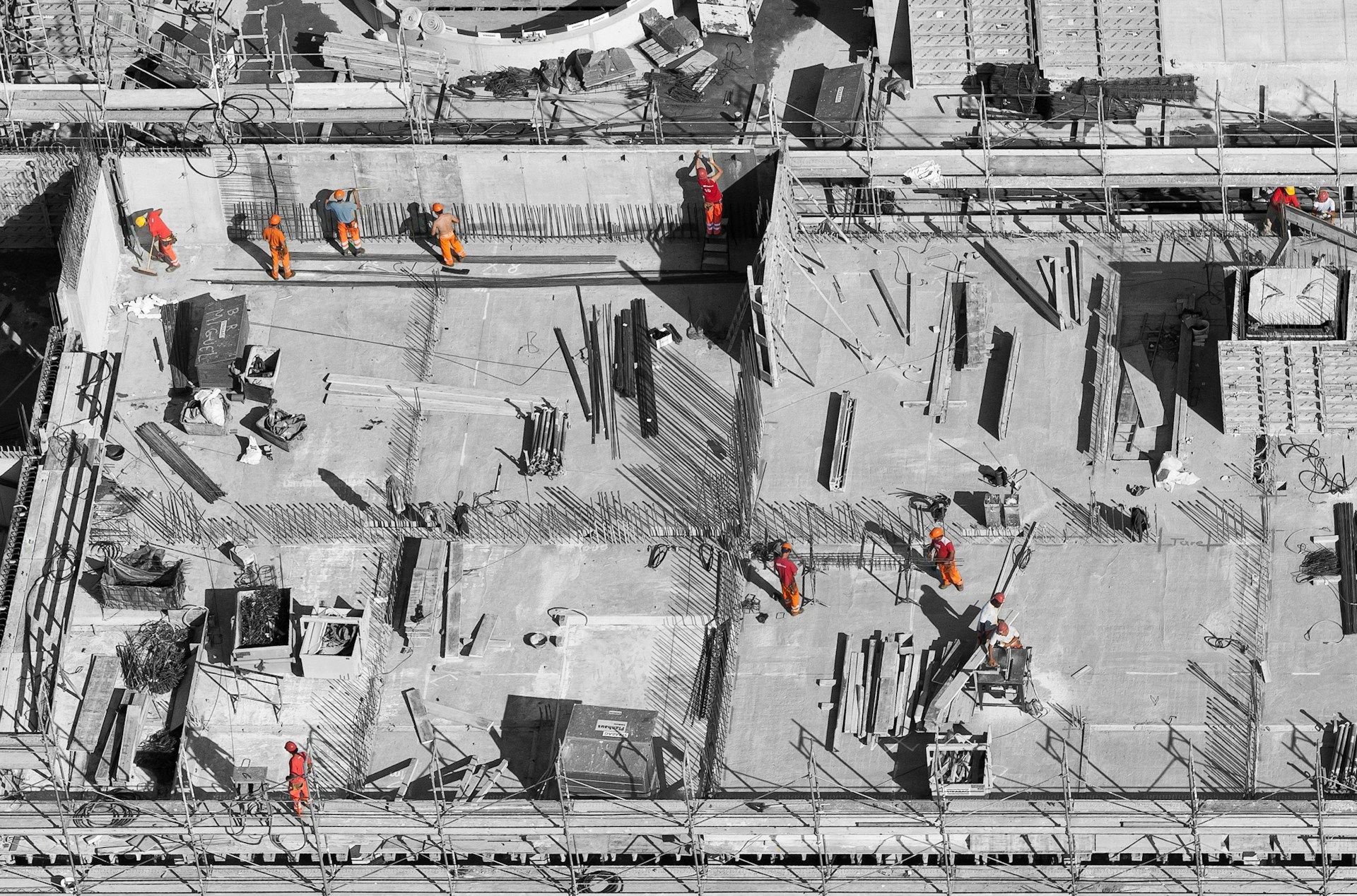
Key Features of Construction Management (CMS) Software
- Project Planning and Scheduling: At the heart of any construction project is effective planning. CMS offers tools to create detailed project schedules using Gantt charts or critical path methods. These tools help teams identify key milestones, allocate resources, and set realistic deadlines. By visualizing the project timeline, managers can quickly adjust plans to accommodate changes or delays.
- Budgeting and Cost Management: Managing costs is crucial in construction, where budgets can quickly spiral out of control. CMS provides features for budgeting, expense tracking, and financial forecasting. Users can create detailed estimates based on historical data and adjust budgets as the project progresses. Real-time cost tracking helps identify discrepancies between projected and actual expenditures, allowing for timely corrective actions.
- Resource Management: Efficient resource allocation is key to project success. Construction Management Software allows users to manage labor, materials, and equipment efficiently. With features for tracking resource availability and utilization, teams can ensure they have the right resources at the right time, minimizing downtime and optimizing productivity.
- Document Management: Construction projects involve a significant amount of documentation, including blueprints, contracts, permits, and correspondence. CMS offers centralized document management systems that make it easy to store, access, and share documents. This reduces the risk of miscommunication and ensures that all team members are working with the most current information.
- Collaboration Tools: Effective communication is vital in construction, where multiple stakeholders are involved. CMS typically includes collaboration tools that facilitate real-time communication among team members, subcontractors, and clients. Features such as messaging, file sharing, and collaborative project spaces help ensure that everyone is on the same page, reducing the likelihood of misunderstandings.
- Reporting and Analytics: To make informed decisions, construction managers need access to accurate data. CMS provides reporting and analytics tools that generate insights into project performance, financial health, and resource utilization. Customizable dashboards allow users to visualize key performance indicators (KPIs), enabling them to make data-driven decisions that improve overall project outcomes.
- Compliance and Risk Management: Construction projects are subject to various regulations and standards. CMS helps manage compliance by providing tools for tracking safety protocols, permits, and inspections. Additionally, risk management features allow teams to identify potential risks early and develop mitigation strategies, reducing the likelihood of costly setbacks.
Benefits of Using Construction Management (CMS) Software
- Improved Efficiency: By automating routine tasks and providing easy access to information, CMS helps streamline workflows, allowing teams to focus on critical project aspects rather than administrative burdens.
- Enhanced Communication: With all stakeholders connected through a single platform, CMS fosters better communication, reducing the chances of errors and miscommunication.
- Better Decision-Making: Real-time data and analytics empower construction managers to make informed decisions quickly, adapting to changes in project scope or budget.
- Increased Accountability: With clear project documentation and tracking, CMS promotes accountability among team members, ensuring that everyone knows their responsibilities and deadlines.
- Cost Savings: By improving efficiency and reducing errors, CMS can lead to significant cost savings, making projects more profitable.
Construction Management Software plays a critical role in the modern construction landscape. By integrating various project management functions into a single platform, it enhances collaboration, improves efficiency, and ensures that projects are completed on time and within budget. As the construction industry continues to evolve, the adoption of CMS will become increasingly essential for organizations looking to stay competitive and deliver successful projects. Whether you’re managing a small renovation or a large infrastructure project, investing in effective CMS can be a game-changer.
Procore
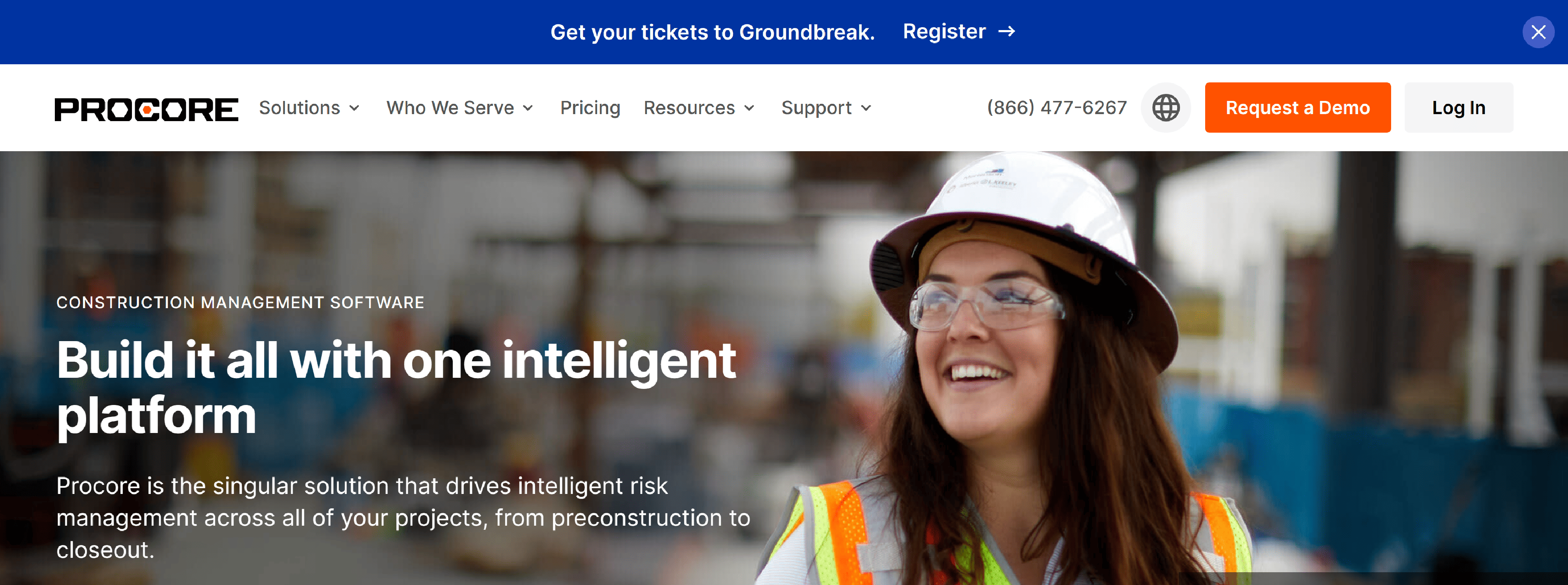
Procore – the all-in-one construction management software built to help you finish quality projects safely, on time, and within budget.
- Connect with a real Procore expert via email, chat, or phone support in less than a minute
- Connect to 500+ out-of-the-box integrations you already use and love in the Procore App Marketplace
- Connect, learn, inspire, and grow your online community with Groundbreakers like you around the world
- Learn anywhere, anytime with free self-paced, online training courses and role-based certifications
Fieldwire
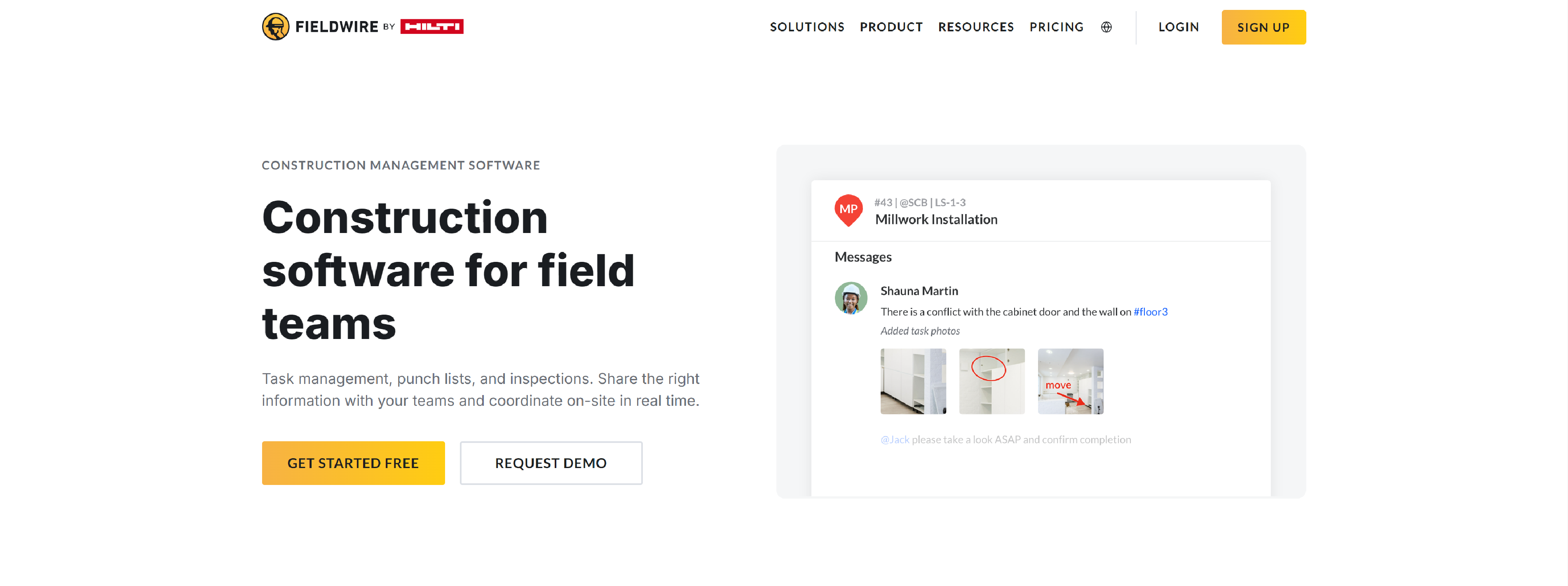
Connect your jobsite and office teams in real-time with Fieldwire construction project management software.
- Software built for the field
- Mobile jobsite management
- Schedule and prioritize work
- Track manpower and cost
- Customize how you manage your work
- Import tasks from the project plan
Oracle
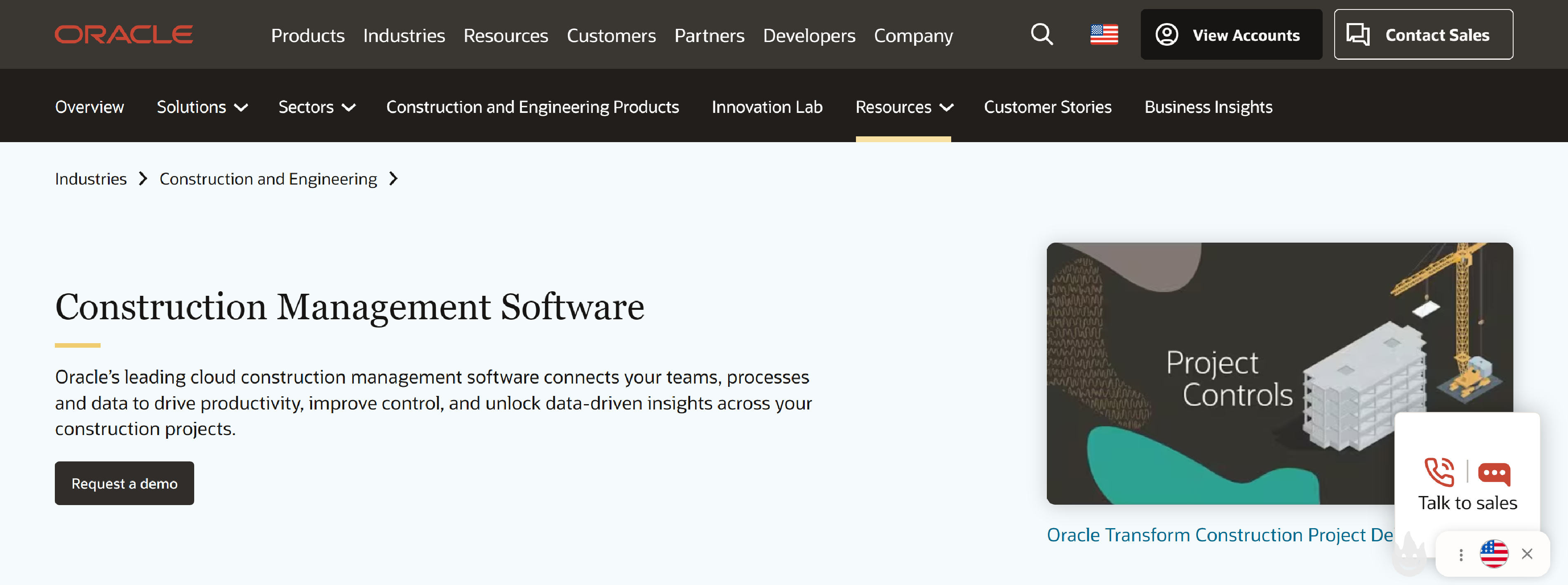
Connect your teams, processes, and data to improve productivity and control with Oracle’s cloud construction management software.
- Schedule management
- Construction Project and Cost Controls
- Design and construction coordination
- Construction document management
- Construction payment management
Buildxact
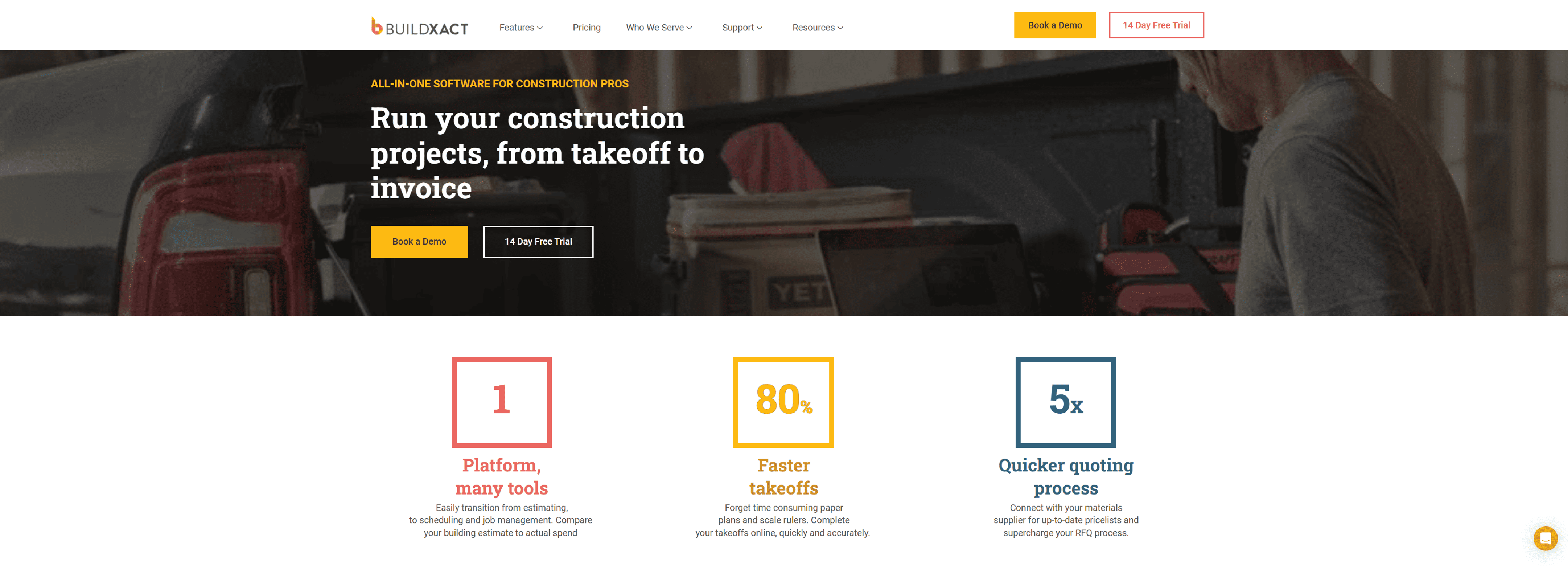
Home builders and renovators work more efficiently across the entire project lifecycle using Buildxact construction job management.
- Sustain long-term growth using a complete construction job management tool
- Save time. Do it once, use it again
- Quote 5x faster and win more business
- Job planning for what you do best
- End the budget guesswork
Autodesk
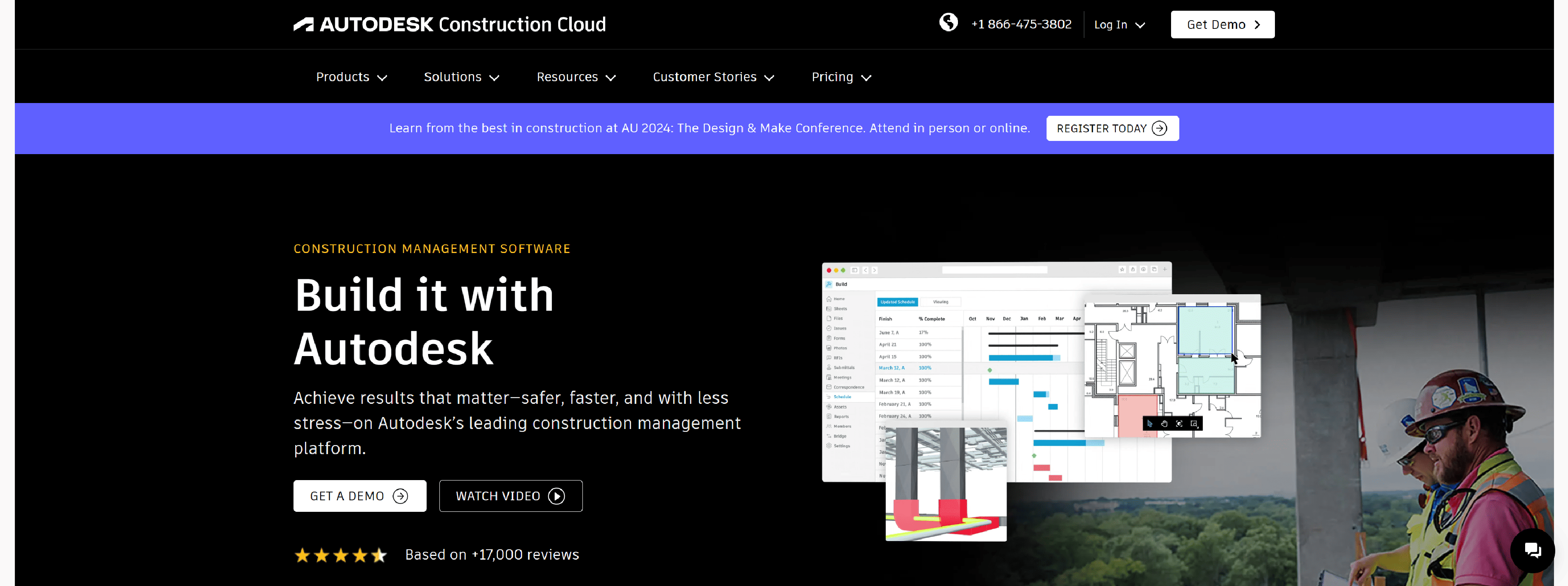
Autodesk Construction Cloud can help your teams collaborate securely and quickly across every project phase, so you can deliver projects on time and on budget.
- Spend less time in the weeds and more time building
- Set your teams up for success at any stage with robust solutions for planning, fabrication, and field work
- Manage construction lifecycle costs across your portfolio and make more informed decisions with the latest BIM data
Buildbook
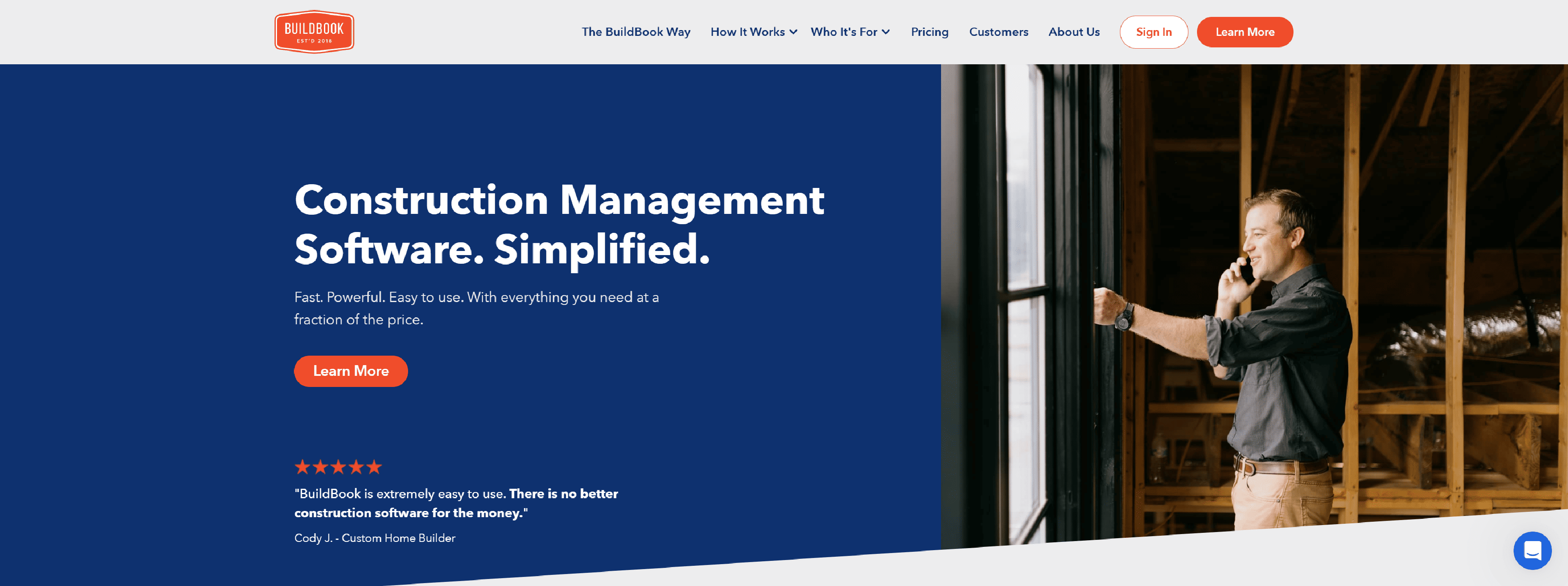
BuildBook’s construction management software helps custom home builders, general contractors and remodelers run better construction projects, deliver a top-notch client experience, and increase their profits with project management tools, sales and marketing tools, and streamlined client communication – all in one easy-to-use platform.
- Manage your sales pipeline, create accurate estimates, and deliver stunning proposals
- Streamline your projects, improve efficiency, and deliver an amazing client experience
- Collaborate with your team, interact with clients, and centralize all communication
Letsbuild

Build faster, safer and smarter with LetsBuild construction management software for snagging, defect management, site inspections, planning & project tracking.
- Say goodbye to Excel, unlock a better way to build with a construction-specific suite
- Changing habits is hard. That’s why we make it easy for your teams with easy-to- learn tools
- Subscribe and set up LetsBuild on a one-time onboarding cost, and get on a winning steak when your teams grow and repeat the ripple effect from project to portfolio-level
- Connect to the right people from site to office, whenever and wherever you need it. On iOS, Android or desktop – all in the cloud
- Partner up to power up your team. Build an ecosystem of productivity with Office 365, P6, Revit, Dropbox and more
- Pull LetsBuild apps data within your existing data ecosystem, and map out insights in global dashboards
Projectsimpel
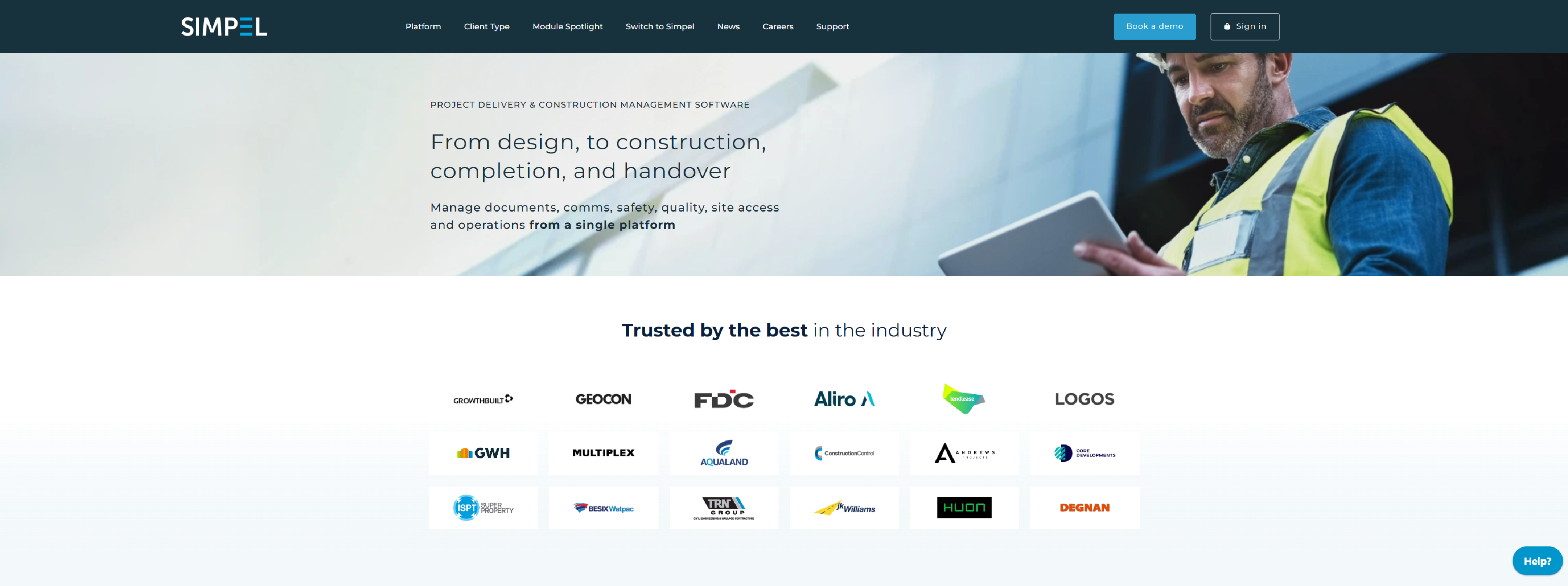
Projectsimpel modules are organised into six areas of functionality and include modules that span the project lifecycle. Whether it’s a few modules or many, select only what you need to manage all your project operations.
- Industry Trust
- Client Retention
- Centralised Documents & Data
- No Reliance on Third Parties
- Total Project Solution
- Intuitive Communication
- Unlimited Users Included
- Australian Designed & Developed
Rakenapp
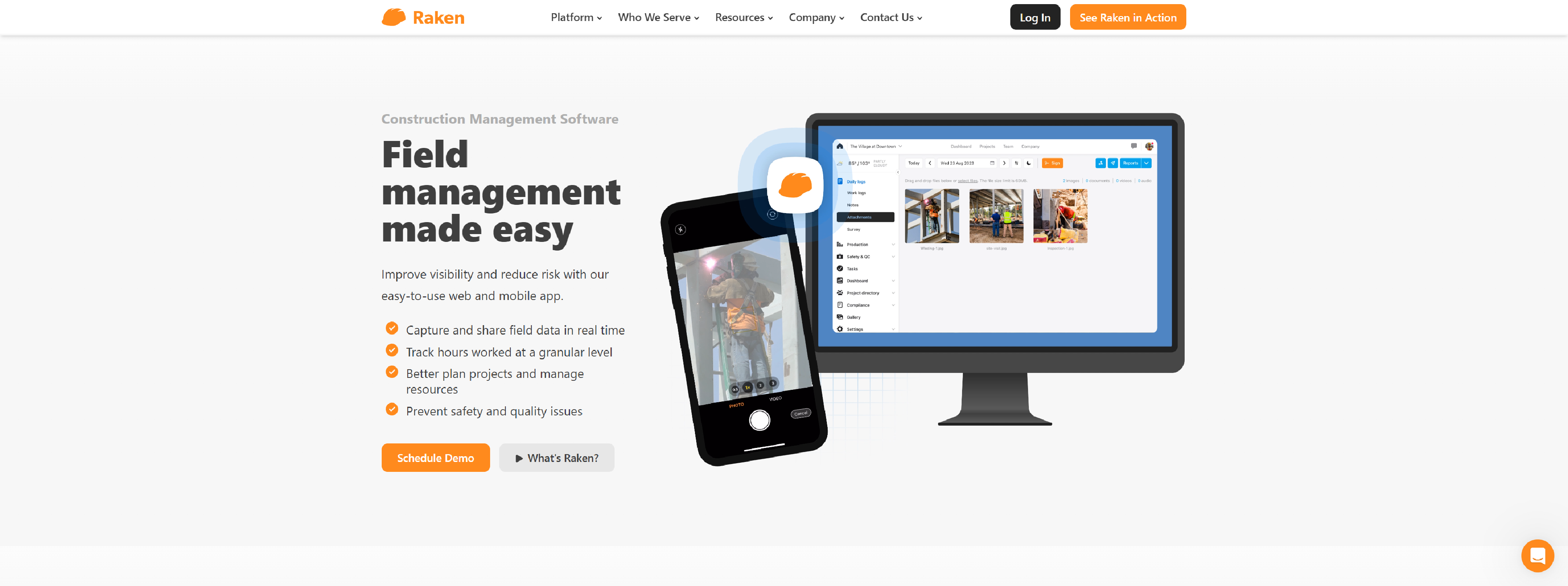
Raken’s easy-to-use construction management software is the #1 solution for daily reports, time tracking, safety, and field insights.
- Closely monitor the jobsite to keep projects on track and address issues before they impact budget or schedule
- Assess project performance at a glance with automated reports and dashboards that offer actionable insights
- Resolve disputes quickly or avoid them entirely by keeping your data and documentation in one place
- Cut back on inefficiencies with our intuitive tools, designed for easy adoption
Theaccessgroup
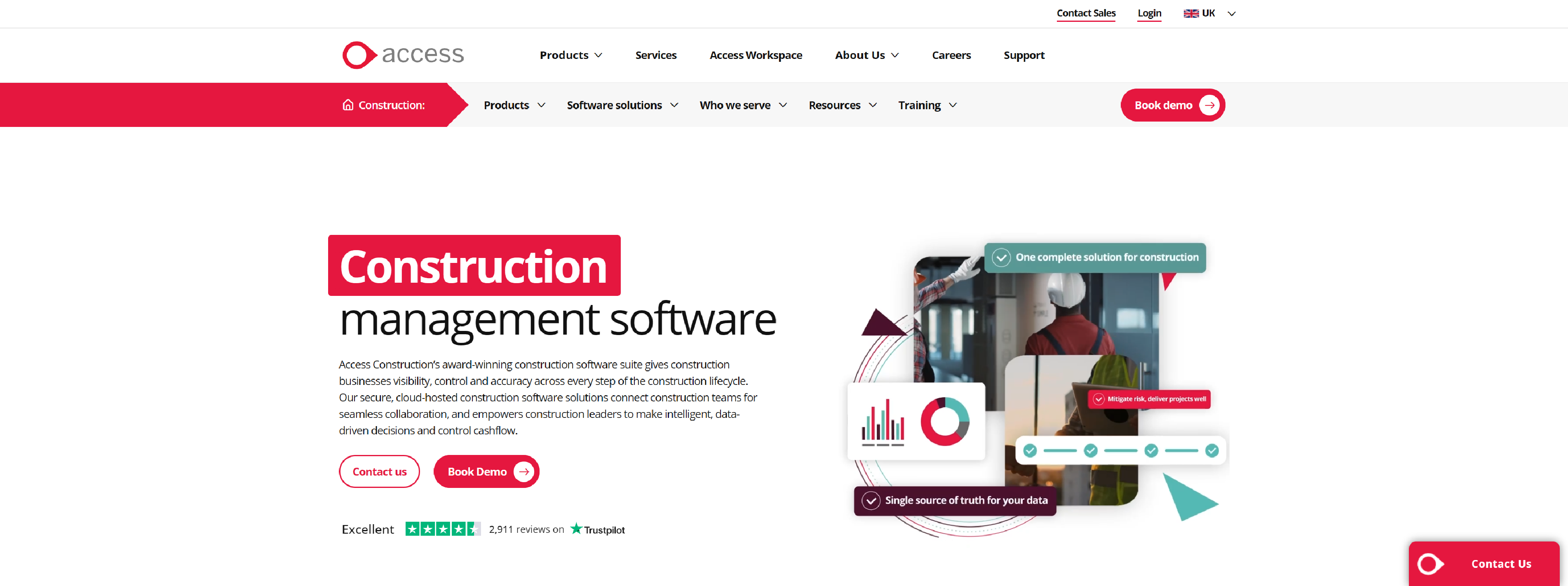
Theaccessgroup – award-winning construction management software covers ERP, project management, estimating, finance, HR and much more in one real-time platform.
- End siloed data and bring your teams together under a single system
- Review budgets and estimates in real-time
- Automate a wealth of processes and save time spent on administration and data entry
- Achieve true visibility of ever-changing projects, identify and navigate issues and reduce rework
- Tackle rising costs with cost control and true cashflow visibility
The Construction Management Software Process
The Construction Management Software (CMS) process involves several stages that facilitate the successful planning, execution, and completion of construction projects. Understanding this process can help organizations maximize the benefits of CMS tools.
1. Needs Assessment
Before selecting a CMS, it’s crucial to assess the specific needs of your organization.
- Identifying Pain Points: Determine existing challenges in project management, such as communication gaps, budget overruns, or document handling issues.
- Defining Objectives: Clearly outline what you hope to achieve with the software, such as improved efficiency, better cost control, or enhanced collaboration.
2. Software Selection
Choosing the right CMS involves:
- Researching Options: Explore different software solutions available in the market. Consider factors like features, scalability, user interface, and customer support.
- Trial and Demonstration: Many providers offer demos or trial versions. Engage your team in testing these options to gauge usability and effectiveness.
- Cost Analysis: Evaluate pricing models, including subscription fees or one-time payments, and assess the overall return on investment.
3. Implementation Planning
Once a CMS is selected, a detailed implementation plan is necessary:
- Setting Goals and Timelines: Define clear objectives and a timeline for the rollout process.
- Resource Allocation: Determine the resources (time, personnel, budget) needed for implementation.
- Integration with Existing Systems: Plan how the CMS will integrate with any existing software tools, such as accounting or design programs.
4. Data Migration
Migrating existing data into the new CMS is a critical step:
- Preparing Data: Organize and clean existing data to ensure accuracy and consistency.
- Data Importing: Use the CMS’s migration tools to transfer data, such as project plans, budgets, and documentation, into the new system.
- Validation: After migration, verify that all data has been correctly imported and is functioning as expected within the new system.
5. Training and Onboarding
Effective training is essential for successful adoption:
- User Training: Conduct comprehensive training sessions for all team members, focusing on the software’s features and functionalities.
- Creating Resources: Provide user manuals, video tutorials, and quick reference guides to assist users in navigating the software.
- Encouraging Feedback: Foster an open environment for feedback during the training phase to address any concerns or questions.
6. Project Setup
Once the CMS is in place, set up specific projects:
- Creating Project Templates: Utilize the software to develop templates for different types of projects, streamlining future planning.
- Defining Roles and Responsibilities: Assign team members to specific tasks within the CMS, ensuring everyone understands their roles.
- Establishing Workflows: Configure workflows that outline the processes for project management, from initiation to completion.
7. Monitoring and Reporting
During project execution, effective monitoring is key:
- Real-Time Tracking: Use CMS tools to track project progress, resource utilization, and budget adherence in real time.
- Generating Reports: Utilize reporting features to create detailed insights into project performance, identifying areas for improvement or adjustment.
- Adjusting Plans: Based on monitoring data, make informed adjustments to project plans, timelines, or budgets as necessary.
8. Post-Project Evaluation
After project completion, evaluate the overall performance:
- Reviewing Outcomes: Analyze whether project goals were met, looking at timelines, budgets, and client satisfaction.
- Gathering Feedback: Collect feedback from team members and stakeholders to identify strengths and weaknesses in the CMS process.
- Continuous Improvement: Use insights gained to refine processes and enhance the use of CMS for future projects.
The Construction Management Software process encompasses various stages that ensure efficient project management from start to finish. By thoroughly assessing needs, selecting the right software, and implementing it effectively, organizations can leverage CMS to improve project outcomes, enhance collaboration, and drive overall success in the construction industry.
Most Common Questions Regarding Construction Management Software
What is Construction Management Software?
CMS is a suite of digital tools designed to help manage all aspects of construction projects, including planning, scheduling, budgeting, resource allocation, documentation, and communication.
What are the key features of CMS?
Key features typically include project planning and scheduling, budgeting and cost management, resource management, document management, collaboration tools, reporting and analytics, and compliance and risk management.
How can CMS improve project efficiency?
CMS streamlines workflows by automating routine tasks, providing real-time access to information, and enhancing communication among team members, which reduces delays and improves overall productivity.
Is CMS suitable for small construction companies?
Yes, many CMS solutions cater to businesses of all sizes. Smaller companies may benefit from features tailored to their needs without overwhelming them with complexity.
How does CMS enhance collaboration?
CMS offers tools for real-time communication, file sharing, and project updates, ensuring all stakeholders have access to the latest information and can collaborate effectively.
Can CMS help with budgeting and cost control?
Absolutely. CMS includes features for budgeting, expense tracking, and financial forecasting, helping teams monitor costs and avoid budget overruns.
What types of projects can benefit from CMS?
CMS is beneficial for a wide range of construction projects, including residential, commercial, industrial, and infrastructure projects.
Is CMS customizable?
Many CMS solutions offer customizable features, allowing users to tailor the software to their specific project requirements and workflows.
What are the costs associated with CMS?
Costs vary widely depending on the software provider, features, and the size of your organization. Many providers offer subscription-based pricing or one-time licensing fees.
How does CMS handle document management?
CMS provides centralized storage for project documents, making it easy to organize, access, and share files. This reduces the risk of miscommunication and ensures everyone has the latest versions of documents.
How can CMS assist with compliance and safety regulations?
CMS helps track compliance with safety protocols, permits, and inspections, ensuring that projects adhere to regulatory standards and minimizing legal risks.
Can CMS be integrated with other software?
Many CMS solutions offer integration with other software tools, such as accounting software, CRM systems, and design tools, allowing for a more cohesive workflow.
What training is required to use CMS?
Most providers offer training resources, including tutorials, webinars, and support documentation. The level of training needed can depend on the software’s complexity and the users’ familiarity with technology.
How does CMS ensure data security?
Reputable CMS providers implement robust security measures, including encryption, access controls, and regular backups, to protect sensitive project data.
Can CMS be accessed on mobile devices?
Many modern CMS solutions are cloud-based and offer mobile applications, allowing users to access project information and collaborate on the go.
What are the long-term benefits of using CMS?
Long-term benefits include improved project outcomes, enhanced productivity, better cost management, and increased client satisfaction, all of which can contribute to the overall success and growth of the business.